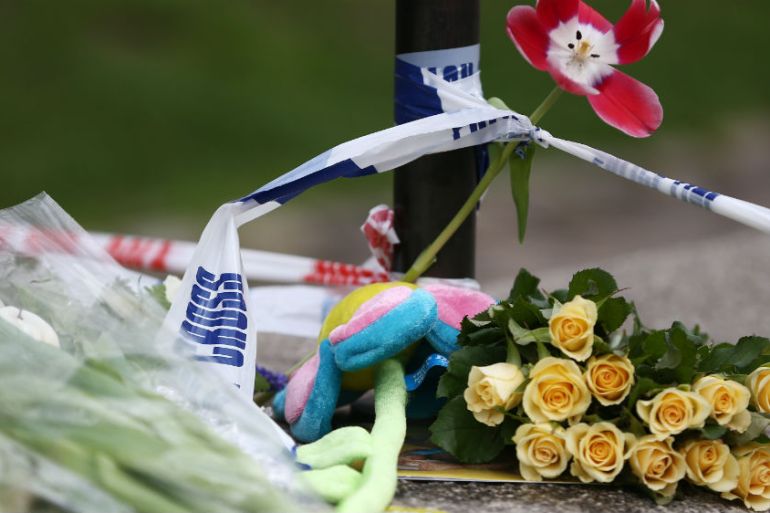UK 2019 knife crime death toll passes 100
London is looking to Scotland for a new strategy in fighting the knife crime epidemic.

Glasgow, United Kingdom – John Lewis was 32 years old when, on May 14 in Middlesbrough, north-east England, he became the 100th person in the United Kingdom this year to be killed in a stabbing.
England, the most populous constituent nation in the UK with 55.6 million people, accounted for the highest number of recorded deaths. Victims were mainly young and male.
While Greater Manchester saw 10 fatalities and the West Midlands eight, 30 of the fatal knife attacks occurred in London.
London, which witnessed a further two stabbings on May 19, leaving one teenager in critical condition and another seriously injured, has been in the grip of a knife crime spree.
Last year, 134 individuals were murdered or unlawfully killed in the UK capital – the bloodiest total in a decade. Of those, 76 people were stabbed to death.
In September 2018, London’s mayor, Sadiq Khan, announced the creation of the Violence Reduction Unit (VRU) in a bid to stem the rising tide of violence in the city.
London’s VRU hopes to emulate its counterpart established in 2005 in Scotland’s largest city, Glasgow. The Scottish Violence Reduction Unit (SVRU) has been credited with curbing Glasgow’s once-notorious violent crime culture, which saw the city become the murder capital of Europe and the coining of the phrase, “Glasgow smile” – knife cuts that begin at each corner of a victim’s mouth and run up their cheeks.
Glasgow’s initiative
“When we looked at the figures … we realised that our [violent crime] trajectory was going in the wrong direction,” says Will Linden, co-deputy director of the SVRU.
“In order to reduce the violence, we needed to take a wider look at this and think differently. We needed to look at things like education, health, academia, the workplace and the third sector.”
As such, a public health approach to fighting violent crime was born in Scotland. This saw healthcare specialists, such as trauma surgeons, visit schools to share their experiences of treating knife attacks and offering teenagers an alternative to joining gangs.
Just over 10 years after the SVRU began its work, the statistics were encouraging. In 2004-2005, there were 137 homicides in Scotland – a UK nation of just 5.4 million people – which included 40 incidents in Glasgow alone. By 2016-2017, there were just 62 murders in Scotland.
London’s unit is based on this ground-breaking Scottish approach. In January 2019, Khan stated: “We have looked and learned from cities like Glasgow … In London, the Violence Reduction Unit will lead the capital’s response to understanding the causes of violent crime.”
‘Too late for London’?
But not everybody believes that following Scotland’s lead is the correct approach.
“I’m not sure why we’re following Scotland,” says Sheldon Thomas, founder and chief executive of Gangsline – a London non-profit organisation that provides support to young people involved in gang culture, focusing on underprivileged communities.
“I’m not sure why we try to copy what other people do, instead of trying to come up with something completely different.”
Thomas, himself a former gang member in the 1970s, has written and spoken extensively on the subject of violent crims in England. He has long argued that the British government doesn’t invest the necessary funds in tackling violent crime.
He believes that it is already “too late for London”.
“That is why every single week, we have had a murder and we have had a stabbing,” he tells Al Jazeera.
Linden, however, remains optimistic that London’s new unit can succeed.
“London can be a success if they manage to actually understand the problem and apply the right solutions,” he states.